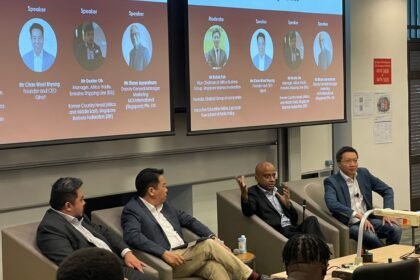The idea of fast fashion relies on mass production which impacts on quality because of automation in the production, and subsequently, the cost. On the other hand, slow fashion as the name suggests, refers to clothes that are produced by hand with artistic talent for high quality designs in a sustainable manner.
The Economic Impact of Slow Fashion
The economy of a country somewhat aligns with the kind of fashion its citizens patronise. Averagely, what the masses can afford is what drives the fashion industry. On the African continent, fast fashion is the order of the day and that has a massive impact on revenue and the environment.
It is more expensive to produce slow fashion clothes as it requires a careful and deliberate process. From designing to the appropriate sourcing of raw materials for production that accounts for environmental ecosystem. To get this right, cost and time is highly important as it is nearly impossible to mass produce slow fashion due to its minute detailing complexities. Kate Fletcher, author of Sustainable Fashion and Textiles, succinctly stated, “The products in slow fashion are not disposable. These are sustainable and targeted to serve a long period. Slow fashion is not seasonal. It does not work like a trend.”
The Perils of Fabric Pollution
Over the years, the fashion industry has gradually become infamous for fabric pollution all over the world. On the report of Africa Renewal, a magazine published by the United Nations, the fashion industry is the second-most-polluting industry behind the oil industry. The fashion industry is reported to not only produce 10% of global carbon emissions, but also contribute to 20% of wastewater production.
As stated by the UN, to make a pair of jeans, it takes about 8,000 litres of water— equivalent to over seven years of drinking for a human being. With all these affecting the environment, it would be promising to use these clothes for long. Unfortunately, within 10 uses, these jeans and shirts will be abandoned for brand new, trendy attires, contributing to the 21 billion tons of textiles sent to landfills per year, according to the UN Economic Commission for Europe.
The Only Way Forward is Slow Fashion
There is a global outcry, not just in Africa, for the need to switch to slow fashion because fast fashion is rapidly polluting the environment. Have you wondered where fabric manufacturers dispose of their chemical waste after producing the fabric? it is no hoax that fast fashion clothes are made from petroleum-based chemicals. This has a massive carbon emission effect on eventual human survival; from material creation to manufacturing and ultimately, textile waste decomposition in landfills and water bodies.
People have a choice to buy whatever they want. It takes a conscious and attentional person to decide whether to but slow fashion or fast fashion. Africa is laden with a lot of fast fashion attires because it is affordable for the consumer, without knowledge of its direct impact on the ecosystem. The goal of slow fashion is sustainability with benefits of quality products, clean environment, zero waste and longevity. We may need to resurrect the conversation of hemp clothing and its positive impact on the environment, as it can help us traverse fast fashion.
Lorraine Amoako Nyantakyiwa is the chief executive and founder of luxury headwear brand, LORRAMO. She is a barrister and financial consultant, whose experience and expertise has contributed to the success of many companies she has worked with. Her strategic insight and intellectual acumen have made her one of the most in-demand consultants across West Europe and the UK. She has now decided to commit her talent to build an exclusive line of silk headwear to support the culture and creating job opportunities across Africa, while empowering women and the youths.



